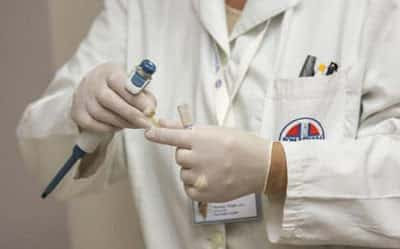All about Kshar Sutra Therapy - Introduction
What is Kshar sutra?
Kshara-sutra is a Hindi term which is coupled with two words. First is Kshara means alkali and Sutra stands for thread. It really is an Ayurvedic parasurgical approach / therapy and safe, sure and affordable solution for piles, fistula, fissure etc. and extremely popular and greatly regarded procedure for fistula, pilonidal sinus, piles etc. treatment in India. It really is a straightforward and safe method and technique that requires little and nominal surgical invasion but no hospitalisation.
Kshara-sutra is a Hindi term which is coupled with two words. First is Kshara means alkali and Sutra stands for thread. It really is an Ayurvedic parasurgical approach / therapy and safe, sure and affordable solution for piles, fistula, fissure etc. and extremely popular and greatly regarded procedure for fistula, pilonidal sinus, piles etc. treatment in India. It really is a straightforward and safe method and technique that requires little and nominal surgical invasion but no hospitalisation.
It was initially introduced by Maharishi Sushruta (Father of Surgery) in his text - SUSHRUTA-SAMHITA
for treating haemorrhoid, pilonidal sinus (PNS), fistula- in-ano,
fissure-in-ano and other ano-rectal disorders. Kshar sutra is a herbal medicated
setons (surgical linen thread 20 No.) prepared by various organic and natural alkaline herbs like smearing the latex Euphorbia nerifolia and
kshar of certain herbs like repeated coatings of latex -Snuhikshara - Sehund or
Thuhar (Euphorbia lingularia), ash of Achyranthus aspera (Apamarga-kshara),
Arkakshara (Caltropis gigantea) and natural antibiotic like haridra - turmeric
powder over a surgical linen thread, frequently for 15 - 21 times which
is dried out under sun-light or special Kshar sutra cabinet.
The recurrence rate of ano-rectal diseases after
surgery varies from 10 - 20% and cure rate is 99 - 100%
with mimimal recurrences and less side - effects. The mechanised action of the
threads are collectively do the task of cutting, curetting, draining, and
cleaning the sinus - track, and promotes recovering and healing of the
track of sinuses.This also serves both as the antiseptic and fibrotic agent to
cause healing.
Under local anaesthesia, the kshara sutra is
placed into the tract and both ends of the thread are tied building a loop. The
alkalis coated on the thread are consistently released throughout the length of
the track there by cutting, curetting, draining cleansing and healing /
recovering the track.This restorative and healing action of the thread
continues for a week. The old thread is then changed with a fresh one. The changing of the thread is a straightforward method taking about 5 to 10 minutes and requires no anaesthesia. In this treatment, Kshar sutra
serves as herbal chemical cauterisation.
Indications of Kshara
Sutra Treatment in COMMON ANORECTAL DISORDERS -
Anorectal-polyps.
Abscess in ano-rectal region.
Anal - cryptitis & Pilonidal Cyst.
Rectal polyp and skin Tags / Warts.
Contraindications of Kshara Sutra
Abdominal disorders - Appendicitis,
Inflammatory bowel disease like Ulcerative colitis,Tuberculous abscess of the
abdominal wall, Crohn’s disease, Intestinal cancers.
Venereal diseases and Regional ileitis.
Urethral stricture and sinuses.
Bone diseases - Osteomyelitis of femur and
pelvic bones, pelvic malignancies, hip joint and spinal tuberculosis.
Advantages / Benefits of the Ksharsutra Therapy
No antibiotics, no bed rest or minimum bed rest
and patient can resume his daily routine work within 1 to 2 days and no
hospitalization require (Hospital stay is usually minimum upto 5-6 hrs.)
It really is a non-surgical technique,
out patient treatment and performed generally under local anesthesia and
requires only 30- 40 minutes to finish.
The recurrence rate is very less with less pain,
less bleeding and no daily dressing required.
No anal / fecal incontinence and
permanent solution without surgery or antibiotics.
General guidelines and
tips after Kshar Sutra Therapy -
Post Kshar Sutra Therapy Instructions for
patients -
Precaution to be studied after kshar sutra
treatment and patients are encouraged and suggested strictly that are -
Avoid straining during defecation and avoid
constipation too, for this purpose, avoid such types of foods which cause
constipation. If constipation occurs, take gentle ayurvedic laxatives
like Isabgula husk (Psyllium husk) to keep the bowel clear regularly.
Take foods abundant with fibers and for
this purpose intake fresh organic fruits and green leafy vegetables. Patient is
also encouraged to take light and easily digestible diet, green
vegetables, salad and seasonal fruits are recommended.
Stay away from alcohol, smoking, tobacco
chewing, excess tea / coffee, excessive spicy or junk food.
Maintain proper cleanliness of the
anorectal region and do proper dressing to promote recovery.
Avoid long term and extended sitting down.
Drink plenty of liquids, normal drinking water
is better.
Stay active like walking over treatment. So do
regular morning walks.
Do the sitz bath with common salt or antiseptic
solution mixed lukewarm water regularly.
Stay away from sexual activities.
Approach to Kshar Sutra Preparation -
For the making of thread, surgical linen thread 20 No. was covered 11 times with the latex of sehud (Euphorbia
neriifolia), accompanied by 7 coatings of the latex of sehud (Euphorbia
neriifolia) and the alkaline powder of Apamarg - kshara (Prickly Chaff)
- Achyranthus aspera alternatively, and dried out under sun.
Finally, 3 coatings of latex (Euphorbia neriifolia) and natural
powder of Haldi (Curcuma longa) were used otherwise alternatively.
At a glance -
Snuhi Sehund / Snuhi Ksheera - Euphorbia
neriifolia - 11 Coatings.
Snuhi Sehund/ Snuhi Ksheera - Euphorbia
neriifolia & Apamarg- Kshara Apamarg (Prickly Chaff) -
Achyranthes aspera - 7 Coatings.
Snuhi Sehund /Snuhi Ksheera - Euphorbia
neriifolia & Haldi - Turmeric Powder (Curcuma -
longa) - 3 Coatings.
_________________________
Written by Rajesh kumar.
_________________________
Written by Rajesh kumar.
Recommended post













No comments:
Post a Comment